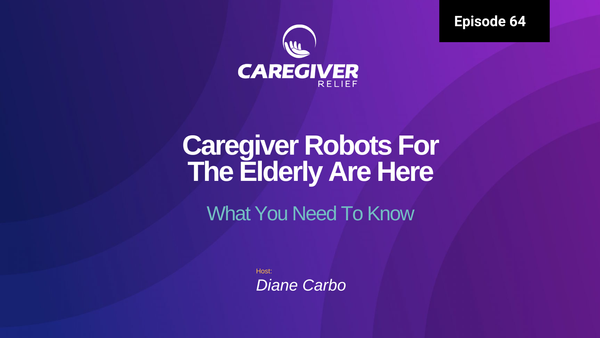Exploring the Benefits of Virtual Reality in Healthcare
Imagine a world where medical students can practice complex procedures without risk, mental health patients receive immersive therapy, and physical therapy becomes more engaging than ever. VR is here.

Imagine a world where medical students can practice complex procedures without risk, mental health patients receive immersive therapy, and physical therapy becomes more engaging than ever. This world is now a reality thanks to the transformative power of virtual reality in healthcare (VR) and augmented virtual reality in medicine (AR).
Short Summary
- VR technology is revolutionizing healthcare, providing immersive learning experiences, remote collaboration and communication opportunities, customized training scenarios for medical professionals & exposure therapy to help with mental health.
- AR offers improved visuals of the human anatomy plus enhanced patient communication resulting in better outcomes & cost savings.
- The future of healthcare VR looks bright with potential to integrate AI/ML technologies & expand applications in telemedicine, but ethical considerations must be taken into account.
The Impact of Virtual Reality on Medical Education
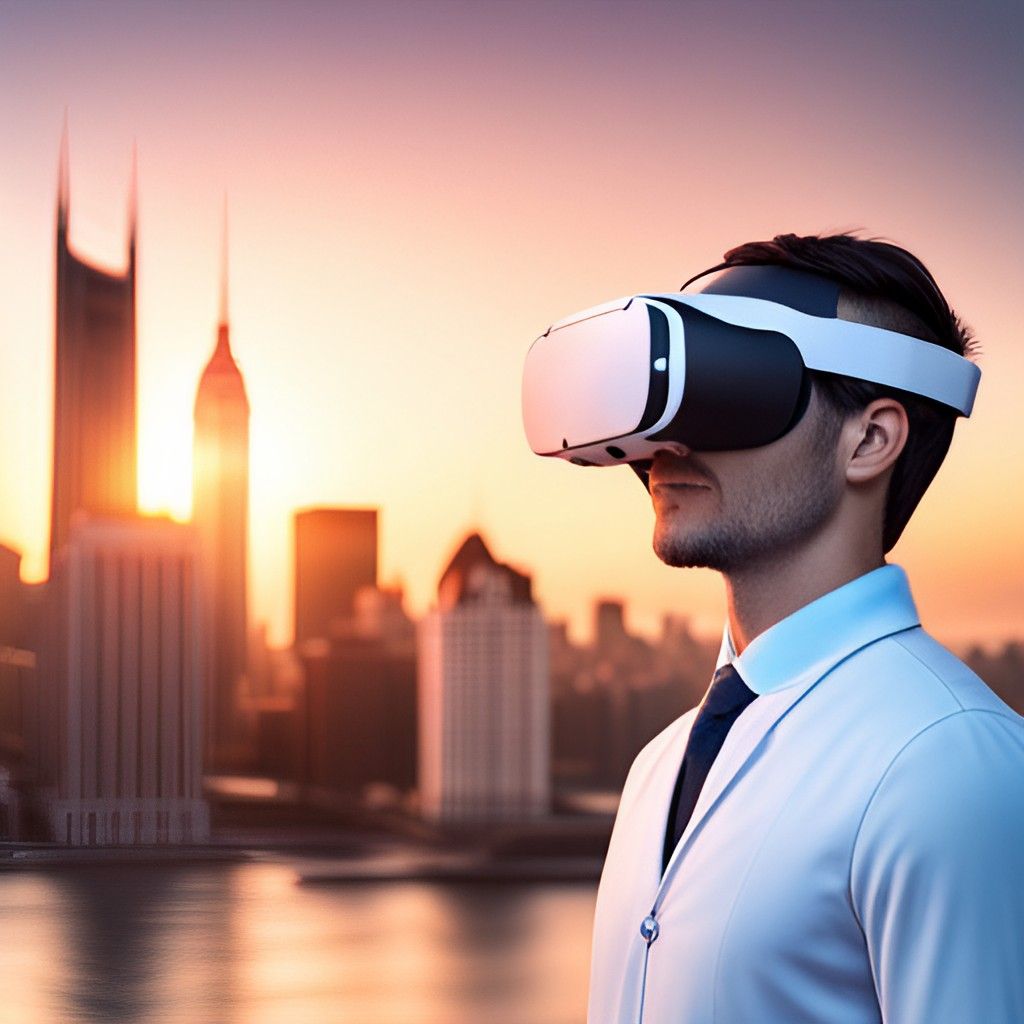
Virtual reality is revolutionizing medical education, providing immersive learning environments, remote collaboration and communication, and customized training scenarios. Gone are the days of medical groups solely relying on cadavers and textbooks to learn human anatomy.
With VR technology, medical students can now dive into a virtual environment and explore the human body in ways never possible before.
Immersive Learning Environments
In the VR world, medical students can interact with digital models of human anatomy, offering an unparalleled hands-on experience. The American Board of Internal Medicine recommends residents undergo training using simulation tools before treating any real life patients.
This approach allows healthcare professionals to practice and refine their skills in a safe, risk-free virtual environment, ultimately reducing the chance of complications and improving patient outcomes.
Remote Collaboration and Communication
Healthcare professionals can also benefit from remote collaboration and communication through VR. . Virtual reality headset allows teams to collaborate in a virtual space, resulting in more effective and engaging training.
Imagine discussing a complex medical case with your colleagues from around the world, all while being immersed in virtual reality solutions in the same 3D environment. The possibilities for innovation and knowledge sharing are endless.
Customized Training Scenarios
Customized training scenarios in VR allow healthcare professionals to practice a wide range of medical procedures, from emergency situations to surgeries, tailored to their unique clinical and educational needs. This personalized approach not only benefits the healthcare professionals themselves but also the patients they treat, as it enables them to refine their skills and provide a higher standard of care.
VR training scenarios provide a safe and effective way for healthcare professionals to practice and hone their skills. By simulating real-world scenarios, they can gain the confidence and experience needed to provide the best possible care for their patients. Additionally, the use of technology.
Virtual Reality for Mental Health Treatment
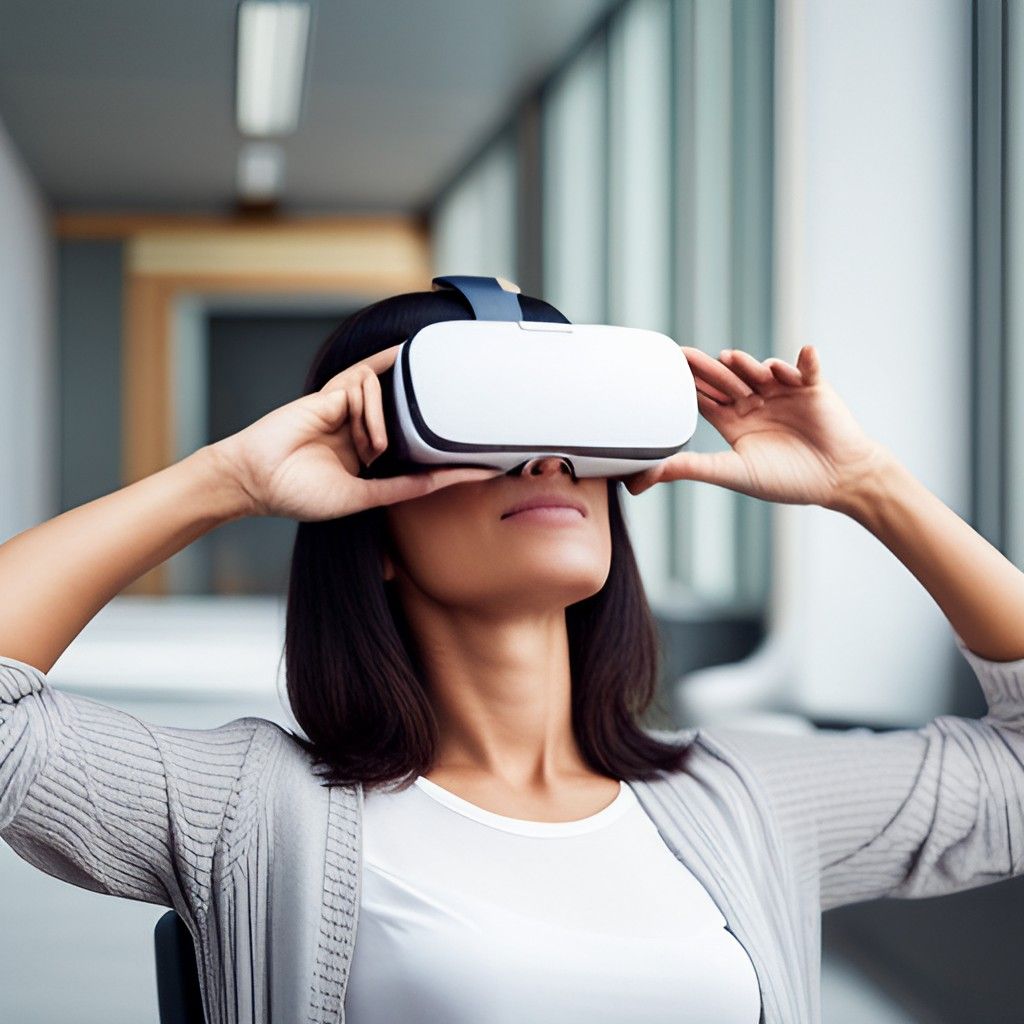
Virtual reality is also making waves in mental health treatment by providing exposure therapy, stress reduction techniques, empathy building, and patient support. Imagine being able to confront your fears in a safe, controlled virtual environment or practicing mindfulness techniques in a serene, immersive virtual world.
VR is helping patients suffering from anxiety, PTSD, phobias, and depression find new ways to manage their mental health challenges.
Exposure Therapy
Exposure therapy is an evidence-based treatment that helps individuals overcome their fears and anxieties by gradually exposing them to the feared object or situation in a controlled environment. With VR, patients can face their fears without any real-world consequences, allowing them to gain control over their emotions and reactions.
This safe and controlled exposure can significantly improve the overall effectiveness of treatment for anxiety disorders, phobias, OCD, and PTSD.
Stress Reduction and Relaxation Techniques
Virtual reality can also be a powerful tool for stress reduction and relaxation. Techniques such as deep breathing, meditation, and yoga can be practiced within calming virtual environments, helping individuals manage their anxiety and find inner peace.
The immersive nature of VR offers a level of escapism that traditional relaxation methods may not provide, making it an ideal option for those struggling with mental health issues.
Empathy Building and Patient Support
Empathy is a crucial component of mental health treatment, and VR offers a unique opportunity to foster empathy and understanding between patients and healthcare professionals. By using virtual reality tools creating immersive experiences that allow individuals to see the world through the eyes of someone else, VR helps build empathy and strengthen the therapeutic relationship.
This, in turn, can lead to better treatment outcomes and increased patient satisfaction.
Revolutionizing Physical Therapy with Virtual Reality
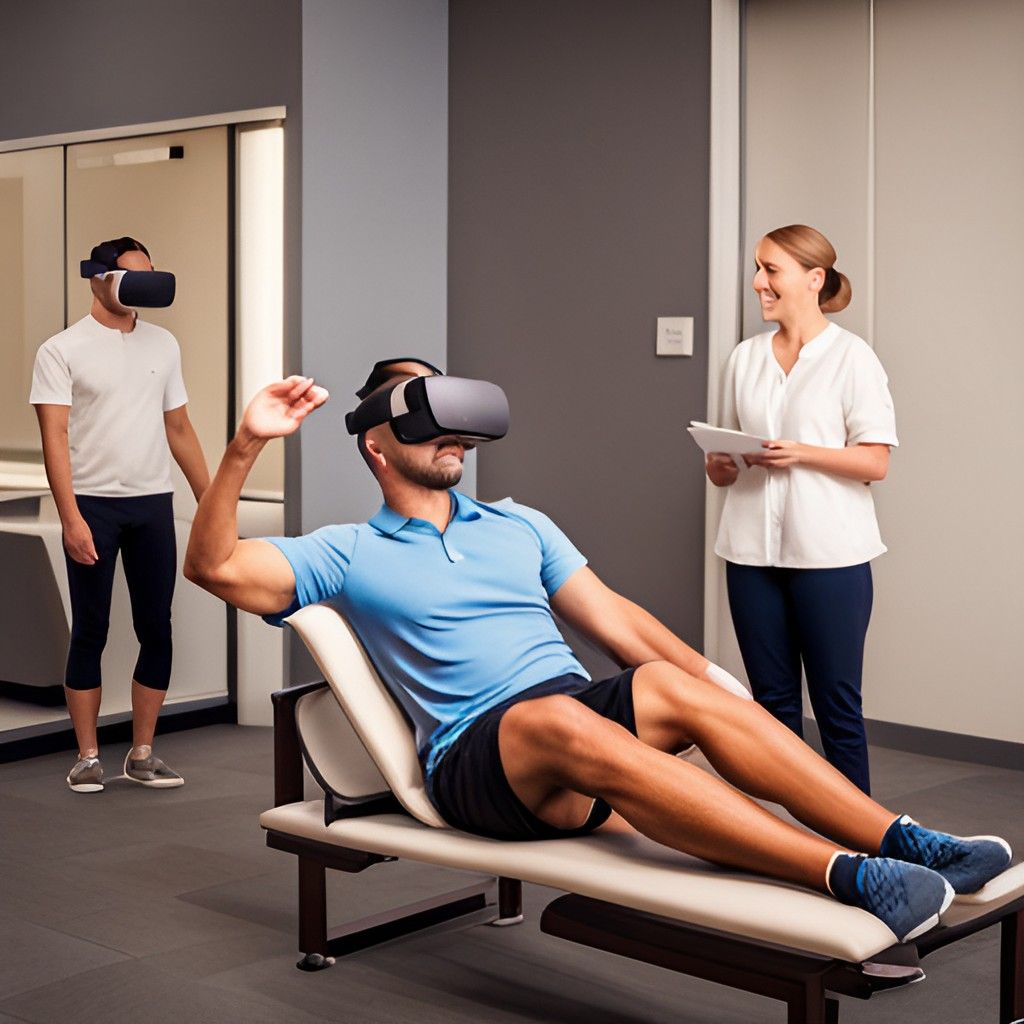
Virtual reality is also enhancing physical therapy by offering gamified exercises, real-time feedback, and tele-rehabilitation opportunities. Patients can engage in rehabilitation exercises within a virtual environment, making the process more enjoyable and motivating.
This not only helps improve patient adherence to therapy, but also leads to better recovery outcomes.
Gamified Exercises
Gamified exercises in VR turn traditional physical therapy into an engaging and interactive experience. By incorporating game-like elements such as points, badges, and leaderboards, patients are more motivated to participate in their rehabilitation exercises and achieve their therapy goals.
Moreover, VR can provide personalized exercises tailored to the needs of specific age groups and conditions, ensuring that each patient receives the most effective treatment possible.
Real-time Feedback and Progress Tracking
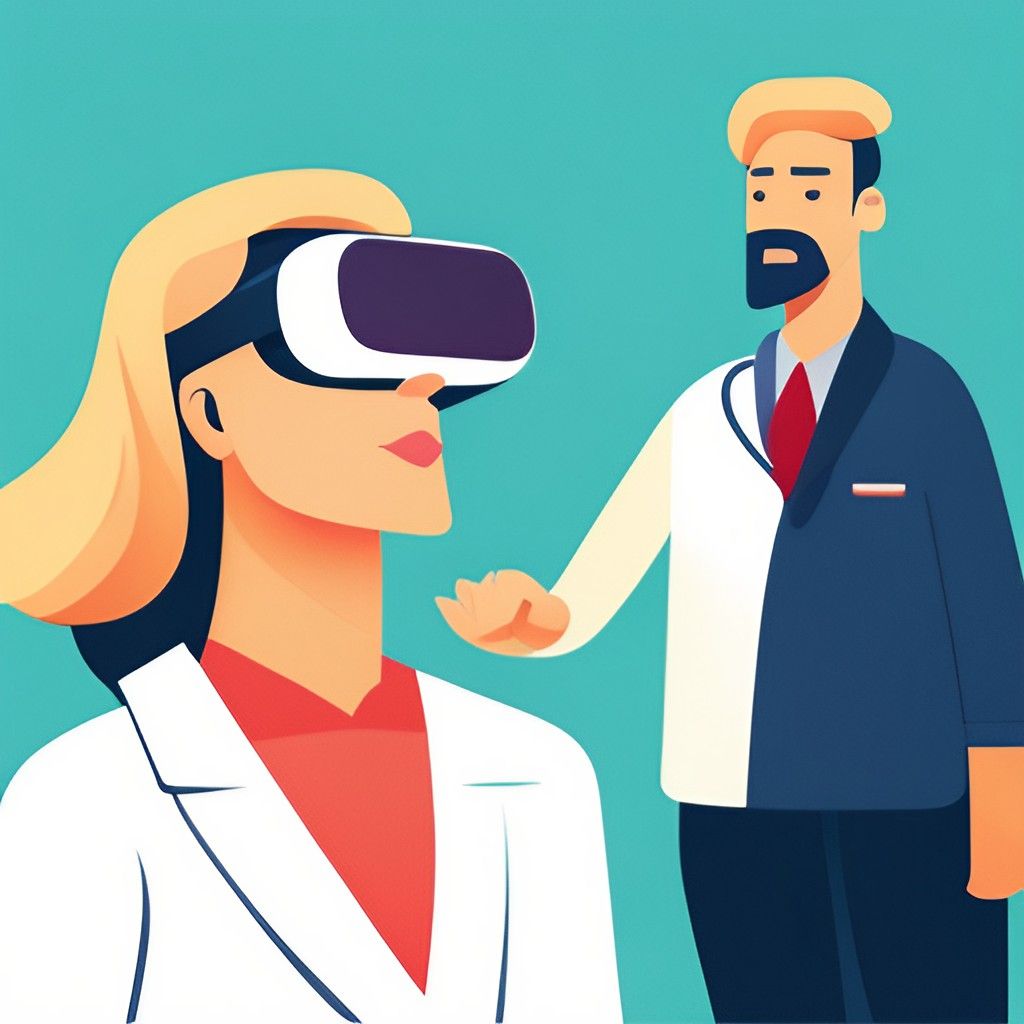
Real-time feedback and progress tracking in VR allow healthcare providers to monitor and adjust treatment plans based on the patient's condition and progress. This data-driven approach ensures that patients receive the most appropriate and effective therapy, ultimately leading to improved recovery outcomes.
Furthermore, VR can help identify areas for improvement and provide targeted interventions, allowing patients to reach their rehabilitation goals more efficiently.
Tele-rehabilitation Opportunities
Tele-rehabilitation, the remote delivery of rehabilitation services through technology, is another area where VR is making a significant impact. By providing patients with access to both virtual reality rehabilitation and therapy sessions, tele-rehabilitation eliminates the need for travel and allows for more flexible appointment scheduling.
This increased accessibility to therapy services can lead to better patient adherence and improved recovery outcomes.
Enhancing Surgical Procedures through VR Technology
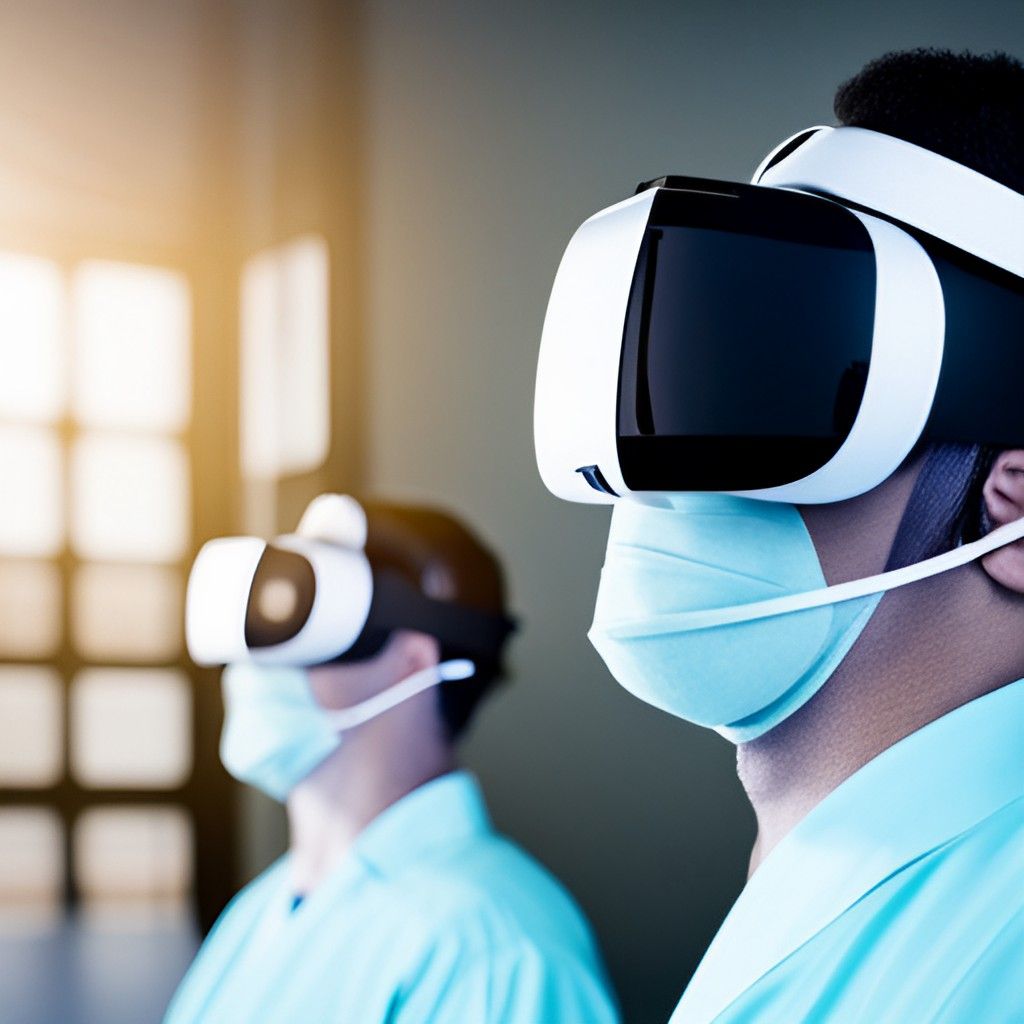
VR technology is also improving surgical procedures by providing preoperative planning, intraoperative assistance, and postoperative evaluation and surgical training throughout. Surgeons can now plan and practice complex procedures in a virtual environment, enhancing their skills and reducing the likelihood of complications.
This not only benefits the surgeons, but also ensures the best possible outcomes for their patients.
Preoperative Planning and Simulation
By creating a 3D model of a patient's anatomy, VR enables surgeons to plan the surgical procedure ahead of time and practice it in a simulated environment. This comprehensive understanding of the patient's unique anatomy allows surgeons to perform the procedure with greater precision and minimize potential complications.
In addition, VR can help patients gain a better understanding of the procedure, preparing them both mentally and emotionally for the surgery.
Intraoperative Assistance and Visualization
During surgery, VR can provide surgeons with a 3D view of the patient's anatomy, allowing for more precise decision-making and better overall surgical outcomes. Furthermore, real-time feedback and guidance during the procedure enhance the surgeon's ability to make accurate and efficient decisions, leading to a safer and more successful surgery.
Postoperative Evaluation and Training
Following surgery, VR can be used for postoperative evaluation and training, helping healthcare professionals assess a patient's recovery and provide the necessary resources for optimal healing.
By practicing specific movements in a safe virtual environment, patients can regain their confidence and improve their overall recovery experience.
Pain Management with Virtual Reality
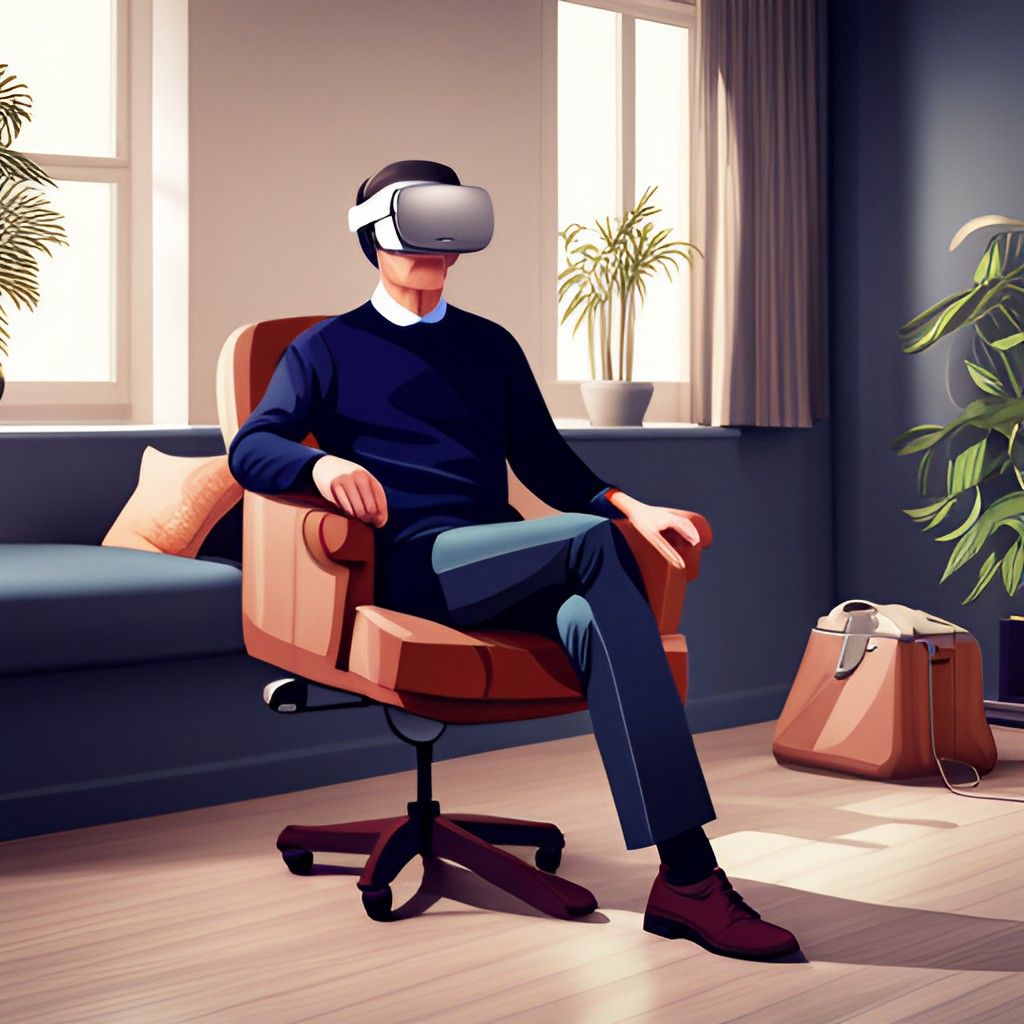
Pain management is another area where VR is making a significant impact. With distraction therapy, mindfulness, and relaxation techniques, and personalized pain relief strategies, patients can experience reduced pain and discomfort during medical procedures and throughout their recovery process.
This drug-free approach to pain management not only leads to a more positive patient experience but also helps minimize the reliance on pain medications.
Distraction Therapy
Distraction therapy involves focusing on something else rather than the procedure to help patients cope with pain and anxiety during medical procedures. VR provides immersive and engaging experiences that draw the patient's attention away from the sensations of discomfort, reducing pain, and anxiety.
Examples of VR distraction therapy include interactive games and calming applications of virtual reality environments that transport the patient's mind to a more pleasant and relaxing place.
Mindfulness and Relaxation Techniques
Incorporating mindfulness and relaxation techniques in VR can also help patients manage pain more effectively. Deep breathing exercises, meditation, and yoga practices can be performed within serene virtual environments, providing an immersive and calming experience that helps individuals manage their anxiety and find inner peace.
These techniques can be particularly beneficial for patients suffering from chronic pain conditions, providing an alternative or supplementary approach to traditional pain management methods.
Personalized Pain Relief Strategies
VR can also be used to develop personalized pain relief strategies tailored to an individual's needs and preferences. By combining various pain management techniques, such as medication, physical therapy, and alternative therapies, healthcare professionals can create a comprehensive treatment plan that addresses each patient's unique pain challenges.
This personalized approach to pain management not only leads to improved patient outcomes but also fosters a more empathetic and supportive healthcare environment.
Augmented Reality in Healthcare
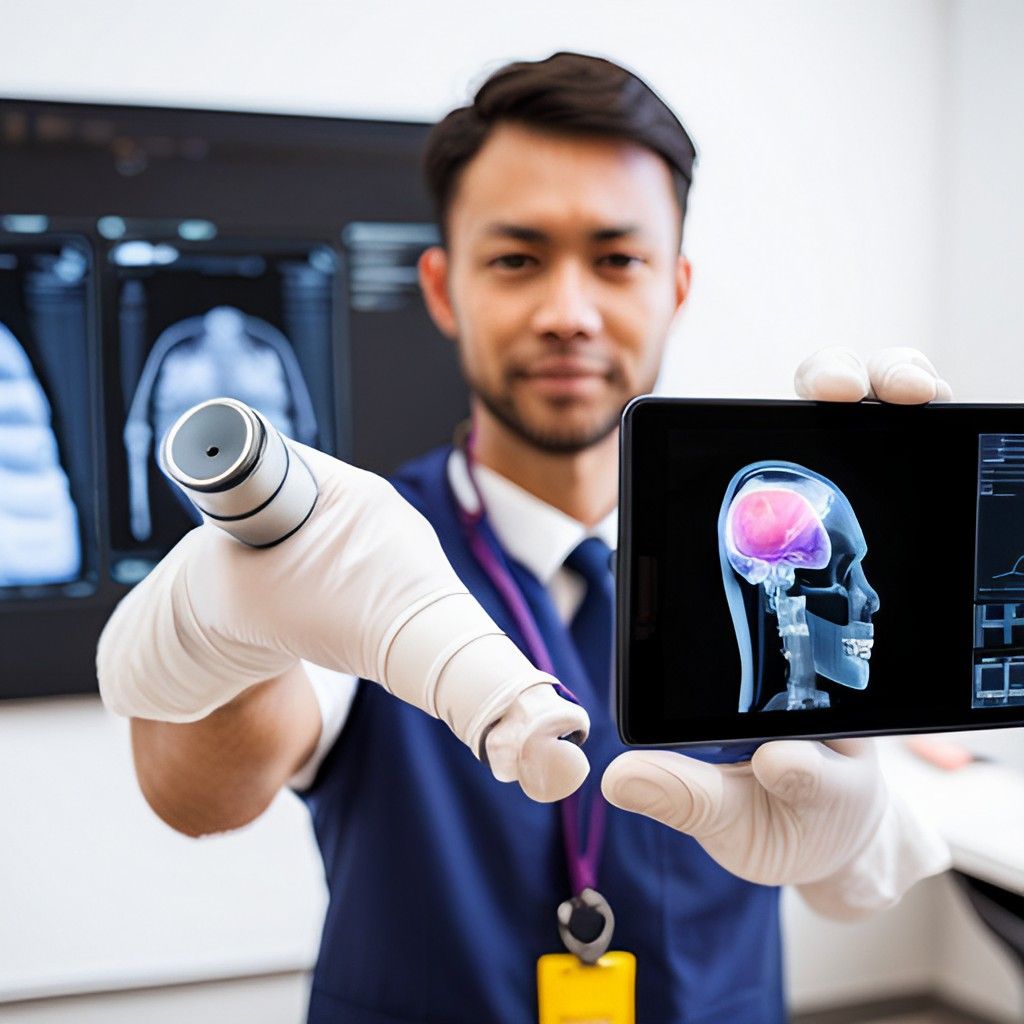
Much as immersive technologies like VR, augmented reality (AR) is also transforming the healthcare landscape. AR combines digital information with the user's environment in real-time, creating a layer of simulated digital imagery over the real world. This technology is being utilized in areas such as medical imaging and visualization, procedural guidance and support, and enhanced patient communication, revolutionizing the way medical professionals diagnose, treat, and care for their patients.
AR is being used to improve patient outcomes, reduce costs, and increase efficiency in healthcare. For example, AR can be used to provide medical professionals with real-time information.
Medical Imaging and Visualization
AR provides medical professionals with an enhanced view of the human anatomy, enabling them to visualize and interact with 3D models of organs and body parts in real-time. This technology not only aids in accurate diagnoses and treatments, but also helps minimize the risk of medical mistakes, ultimately enhancing patient safety.
With AR, healthcare professionals can also provide patients with a better understanding of their condition, empowering them to make informed decisions about their healthcare.
Procedural Guidance and Support
AR can also be used to provide step-by-step instructions and real-time feedback during medical procedures, ensuring accuracy and efficiency. With a detailed visual guide, medical professionals can perform complex procedures with greater precision, leading to improved patient outcomes.
The use of AR in procedural guidance and support reduces the learning curve for new healthcare professionals and enhances overall medical expertise.
Enhanced Patient Communication
Improved patient communication is another benefit of AR technology in healthcare. By providing a more immersive and engaging experience, AR allows medical professionals to better understand their patients' conditions and deliver more personalized care.
This technology also allows patients to gain a better understanding of their condition and treatment options, resulting in more informed healthcare decisions and greater patient satisfaction.
The Future of Healthcare Virtual Reality
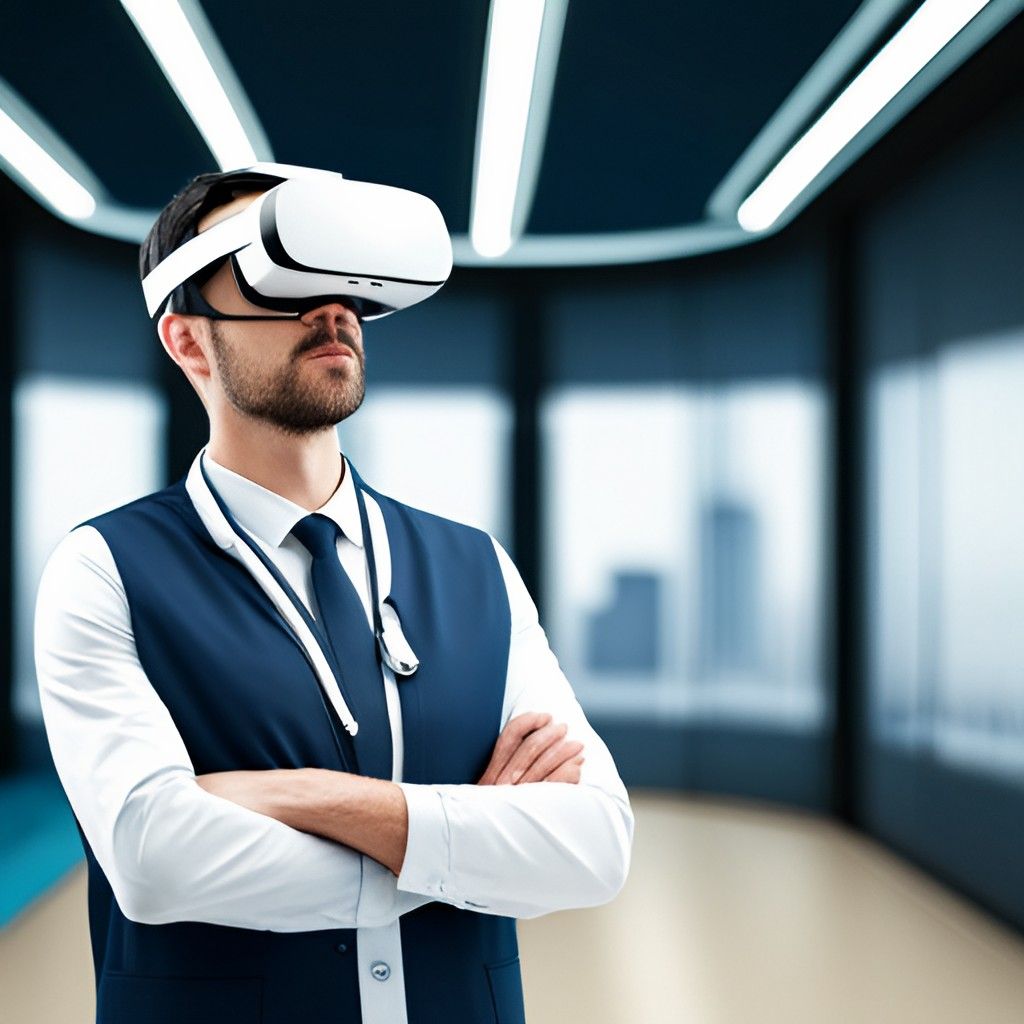
As VR and AR technologies continue to advance, their applications in healthcare are expected to grow and evolve. The future of healthcare VR includes continued integration with AI and machine learning, expanding applications in telemedicine, and addressing ethical considerations and data privacy concerns.
As these technologies become more widely adopted, they have the potential to revolutionize the healthcare industry, improving patient outcomes, and enhancing the overall quality of care.
Continued Integration with AI and Machine Learning
AI and machine learning are set to play a significant role in the future of healthcare VR. By integrating these advanced technologies, diagnostic tools can be improved, motion tracking data can be more accurately analyzed, and personalized care plans can be developed for each patient.
The combination of VR, AI, and machine learning has the potential to transform the way medical professionals diagnose, treat, and care for their patients.
Expanding Applications in Telemedicine
Telemedicine, the remote delivery of healthcare services through digital technology, is another area where VR and AR are expected to make a significant impact. As telemedicine continues to evolve and expand, the integration of VR and AR technologies can further enhance remote patient monitoring, teleconsultations, and tele-rehabilitation services.
This increased accessibility to healthcare services will lead to improved patient outcomes and more efficient healthcare delivery.
Ethical Considerations and Data Privacy
As VR and AR technologies become more prevalent in healthcare, ethical considerations and data privacy must be addressed. Ensuring the protection of patient privacy, obtaining informed consent, and guaranteeing the accuracy of medical information in virtual environments are all critical aspects of integrating VR and AR into healthcare practice.
By addressing these concerns, healthcare professionals can harness the power of VR and AR while maintaining high ethical standards and safeguarding patient privacy.
Summary
In conclusion, virtual reality and augmented reality are transforming the healthcare landscape, revolutionizing medical education, mental health treatment, physical therapy, surgical procedures, pain management, and more. As these technologies continue to advance, their potential to improve patient outcomes, enhance healthcare delivery, and reduce the risk of medical errors is immense. The future of healthcare VR is bright, and by addressing ethical considerations and data privacy concerns, we can ensure that these transformative technologies continue to benefit both medical professionals and patients alike.
Frequently Asked Questions
How is virtual reality used in healthcare?
"Virtual reality technology is being used in the healthcare industry to facilitate doctor-patient communication, enhance medical training, perform virtual simulations and provide sensory stimulation for those with physical disabilities. Its use also extends to providing new opportunities in research, improving accuracy in diagnoses and providing access to resources that would otherwise be inaccessible.
With VR, healthcare professionals can utilize a more immersive experience to care for their patients.
What is the potential of VR in healthcare?
The potential of VR in healthcare is immense. It can be used to ease pain and provide exposure therapy, enabling people to overcome stress and trauma, providing a powerful tool for doctors and care teams to administer more personalized treatments.
VR could also serve as a way to provide medical education to students and professionals alike.
How virtual reality is expanding in healthcare?
Virtual reality is quickly gaining traction in the healthcare sector, with applications ranging from telehealth to medical training. It's enabling healthcare providers to provide more immersive experiences for patients while also increasing accuracy and efficacy of medical training practices.
The potential for VR in healthcare is vast, and this technology is helping to revolutionize care.
Is health care already benefiting from VR?
Yes, health care is already reaping the rewards of virtual reality applications. VR has been used in physical therapy and rehabilitation, resulting in improved motor learning and recovery.
It's also becoming a popular tool for medical training, diagnosis, and therapeutic applications, allowing medical professionals to provide more efficient care to patients.
How is virtual reality used in healthcare?
Virtual reality is increasingly being used in healthcare for patient-centred learning, enhanced surgical procedures, diagnosis and telemedicine, and to simulate physical conditions. It can help medical professionals improve their skills, enabling them to make more accurate diagnoses and provide more effective treatments.
Patients can benefit from the technology too, as it enables more comfortable, engaging and safe therapeutic experiences.
All of our guides, downloads, worksheets, Premium courses
Click Subscribe To Get Started.
Our Resources section can help you find the information and tools that you need. We have courses, videos, checklists, guidebooks, cheat sheets, how-to guides and more.
You can get started by clicking on the link below. We know that taking care of a loved one is hard work, but with our help you can get the support that you need.
Click here to go to Resources Section now!
You might also like this article:






